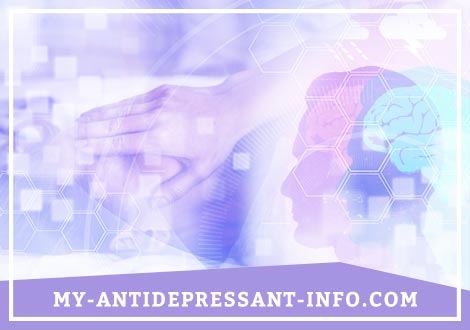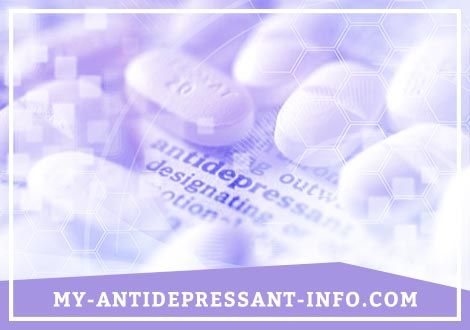
Physiotherapy in the treatment of depression
Depression affects all kinds of people of all ages, countries and social conditions.
According to the World Health Organization (WHO), it is one of the main causes of mental problems, with more than 300 million people affected in the world – a figure that increased by 18% compared to the number of those affected in 2005.
Depression is believed to be a normal disease in certain populations such as adolescents, pregnant women, women entering menopause and older adults; but clinical depression is never normal.

Medicine has a way of treating it, but what can physiotherapy do for this disorder? We explain much more in this article. In this post, we want to talk about physiotherapy as a support method for the treatment of depression.
Understanding depression
The first thing we should do is understand what depression is. Depression is defined as an alteration of the state of mind, where the persistent exaggeration of the usual feelings of sadness of a person is perceived. The person who falls into depression cannot simply say "it's enough, I'm going to cheer up and feel better" and achieve it. Depression appears without a clear symptom that pre-warns what will happen, and represents a huge risk to a person's life.
Currently, depression incapacitates 20 percent of the world's population from working and performing their tasks correctly.
It is a mental illness characterized by symptoms such as sadness, loss of interest in events and situations that were previously of importance to the person. When the depression is not taken care of, it becomes aggravated. In addition to the depression symptoms, there may appear psychiatric signs and physical discomforts.
While it is true that depression is a mental state, it is also true that this depressive state can be externalized at the physical level; begin to affect the musculoskeletal system; and trigger body aches and muscle tensions, among others.
Do not forget that anxiety and depression are the most prevalent psychological disorders in today's society. Depression is a disease that, above all, affects elderly people and women. Although, the stress that humans suffer today has made the average age of the people who suffer it recede by around ten years.
Both disorders are characterized by a psychological symptomatology that is usually accompanied by physical symptoms, such as muscle retraction and hypertonia, rigidity, tachycardia, headaches, dizziness, pain and breathing difficulties caused by increased activity of the sympathetic nervous system.
Stages of depression
Maybe there are people who say that depression and sadness are directly the same, but that is not so. The reality is that to reach depression, you must go through 2 previous stages: sadness, dysthymia (also known as persistent depressive disorder according to the diagnostic and statistical manual of mental disorders, DSM) and depression.
Sadness (first stage)
Sadness is an emotional response that occurs in the face of unexpected events and/or that may represent a danger or threat to the integrity of a person. A sad person tends to see everything from the most negative or unfavorable side, does not feel satisfied and tends to cry.
How to know when a person is sad? It is simple: when a person feels sad, there is always a cause that triggers it, and the duration is proportional to the fact that triggers the sadness. This could be the damage to the integrity of a loved object, the loss of a friend or loved one, the end of a relationship, etc. There are many reasons why sadness arises, but there is always a cause.
It is important to note that a sad person has very few or only physical symptoms, and if they have these, they vary during the day. That is, when they wake up in the morning, they feel a pain in the back or in the head, and suddenly, the realization of activities or with the passing of the hours, the pain disappears.
Dysthymia (second stage)
It is a stage that is right between sadness and depression. The word dysthymia comes from 2 Greek roots, "dis" means evil or difficult and "thymos" means courage, spirit or mind. The dysthymic person constantly presents a disinterested mood. He also always sees everything from the most negative side and lives in constant worry. However, this condition does not meet the pattern of a depressive person and the symptoms are not as severe or as intense as those of depression. Nowadays, it is known as persistent depressive disorder.
In the case of dysthymia, and unlike sadness, there may not be a cause that justifies this state of mind. In addition, factors are often combined (that is, there may be a cause for the person to fall into dysthymia but there may also be a genetic predisposition or inheritance towards dysthymia), which is why a thorough investigation of the person is necessary. It is common for dysthymia to be seen in women. Older people with dysthymia should be monitored, since they have difficulty being independent, isolated or have any condition or injury.
It is possible to identify a dysthymic person because the state of discouragement is almost permanent for at least 2 years with sleep disorders. For these people, sleep is not refreshing, but they wake up several times at night and when they get up and have not slept well, they feel tired). They experience problems concentrating (problems of concentration include even recreational activities) and also somatizations (headaches or dizziness, fatigue, etc.). In the case of children and adolescents, they may experience irritability instead of discouragement (for at least 1 year) because this is the way in which they usually channel energy.
Depression (third stage)
It is the last and most serious stage. We already said that in depression the state of mind is altered and the usual feelings of sadness of a person are exaggerated. Depression may not have a cause that originates or triggers it, and if there is a cause, it is not proportional neither to the duration nor the feeling to it. The person has an important alteration in their performance in the activities that they do every day, the physical symptoms are evident and the symptoms tend to get worse.
Depression: how our body movement responds
An important part of the feelings is manifested in our movement, in our body language. Observe the following scheme: joy, sadness, anger and fear.
When a person is happy, the body makes an upward and outward movement: the spine is erect and the scapular waist makes a gentle retropulsion movement, so that the volume of the rib cage increases and deepens, as if the energy of joy will swell us. There is even an elevation of the facial features. Happiness is associated with expressions such as "jumping out of joy" or "exploding with joy", which are associated precisely with that elevation.

Sadness, on the other hand, is the opposite. It is a downward and inward movement that produces a collapse of the body segments: the column is flexed forward, the shoulder girdle makes a movement, the arms hang from the body without force, there is a collapse of the features, the legs weaken without energy, breathing becomes short and weak and everything goes down. Sadness is associated with expressions like "being sunk", "having fallen the soul" or "having a slump". Imagine a depressed person in constant downward posture, and all the injuries that can arise from maintaining that posture.
What is the relationship between depression and muscle pain?
As for pain, we have to know that:
- 70% of the pains are of natural origin.
- 5% of the pains are due to some physical illness.
- 25% of the pains are of psychological origin
This last 25% is what interests us but what does it mean? It means that there are emotions that are reflected in our body and even externalized in the musculoskeletal system. Western medicine has put aside this thought that emotions can alter our organism, but Oriental medicine has integrated it into one of its theories.
Oriental medicine groups our organs into 5 large groups: liver and gallbladder, small intestine and cardiocirculatory system, stomach and spleen-pancreas, lung and large intestine and finally kidney and bladder. Each organ is affected by a particular emotion, and by affecting the functioning of the organs, pain can be externalized in muscles and joints.
How to treat the ailments of a depressed person?
As you can see, there are 2 ways to approach a person with depression:
- Traditional medicine (referring to Western medicine): Western medicine focuses exclusively on physical symptoms, so it treats depression through the administration of drugs that, if they do not work in the first instance, will be accompanied by a visit to a specialist (psychologist or psychiatrist) who will investigate more about the causes of the problem.
- Natural/alternative medicine (referring to oriental medicine): Oriental medicine seeks the real origin of depression, but more importantly, it is interested in the psychosocial state of the person. Once the cause is determined, it is tried through various means to treat it. The remedies in oriental medicine are natural: phytotherapy, acupuncture, moxibustion, among other means.
Physiotherapy and depression
The practice of any physical activity on a daily basis prevents different diseases, even when, the ailments have already been diagnosed as in the case of depression. For this purpose, exercise programs are directed by sports physiotherapists, whose objective is to reduce the depressive symptoms and the anxiety of the patient.
When applied to psychological treatments, physiotherapy provides better welfare to patients with depression and accelerates recovery and improvement of their quality of life.
Scientific evidence shows that exercise training and increased physical activity leads to the reduction of depression and anxiety, to the improvement of physical and cognitive function, and facilitates changes in behaviors and lifestyles.
Therefore, the physiotherapy treatment against depression is based on physical activity, exercises, balance, postural re-education therapy and massage therapy, among others.
Treating depression with physiotherapy sessions
The physiotherapy involved in treating patients or victims of depression should be understood more broadly. Physiotherapy is much more than massages and other passive techniques. Within this specialty also includes recommendations of physical activities, postures, healthy habits, relaxation techniques, psychomotor therapy and many more.
For all this, adding a physiotherapy treatment to a psychological one for patients suffering from depression is highly positive and recommendable.
Generally, the sports that stimulate the production of endorphins are the activities used by physiotherapists to counteract the effects of depression. Running and physical resistance activities that can be developed outdoors are the main generator of endorphins.
The sports practice should be done at least three times a week – a minimum of 30 minutes each time with a regular acceleration of the heart. However, physiotherapists recommend 45 minutes to an hour. To have a healthy life, exercise should be practiced on a daily basis. It is the most economical and fun way to prevent diseases.
The role physiotherapists play in treating depression
The physiotherapist is the expert professional saddled with the responsibility of improving the quality of life deteriorated by physical aspects. Therefore, according to the Australian Physiotherapy Association, physiotherapy can help the patient in several ways:
- The elimination of pain: This is possible with the prescription of personalized exercise tablets; this being a natural medicine against depression.
- Improving physical perception and self-esteem, a very concerning issue in patients suffering from mental illness.
- Improving of postural aspects, balance and flexibility.
The Chartered Society of Physiotherapy also talks about the importance of the physiotherapist as the professional who can combine closeness with the patient, exercise as a main tool and constant motivation. The three aspects are fundamental in the treatment of depressed people.
With regard to depression as a secondary cause of chronic pain, the American Physical Therapy Association suggests that opioids normally used in this type of patient have as their main side effect the same depression. Therefore, physiotherapy is recommended, with all the tools that the physiotherapist can use, before a long-term treatment based on Pharmacology.
Obviously, we are facing a complex illness that requires a multidisciplinary team. The physiotherapist should certainly be an essential part of this team for a more natural treatment of a complex and potentially very dangerous disease.
A physiotherapist also manages progressive muscle relaxation techniques, which are very useful when controlling muscular tensions or situations in which the person needs to be relaxed. For example, at bedtime, as people with depression have mentioned that they suffer of sleep disorders.
As for pain, many are the physical agents that can be used in physiotherapy: cryotherapy, ultrasound, electric currents, etc. But the physiotherapist must remember that when the true cause of the pain is not treated, the ailments will persist. It is necessary that depression is addressed by a work team that includes a doctor, psychologist and physiotherapist, and work for the person.
Conclusion
There are varying therapies and tools for the treatment of depression, dysthymia, and sadness beyond the purely psychological.
Without a doubt, the exercise is one of the first options. It has been proven that physical exercise is an excellent therapeutic alternative to fight depression. The mechanisms through which exercise works to help fight depression are not clear, but theories have been proposed about neurotransmitter release, the creation of new neuronal connections and increase of cell growth factors that improve the state of spirit.
In addition, it has been proven that the perception of people with depression about their physical capacity and sense of vivacity improves according to their depressive state. Beyond movement, exercise gives them a sense of ability and determination.
Physiotherapy not only brings physical well-being, but mental and even social well-being.
 DE
DE FR
FR IT
IT ES
ES



